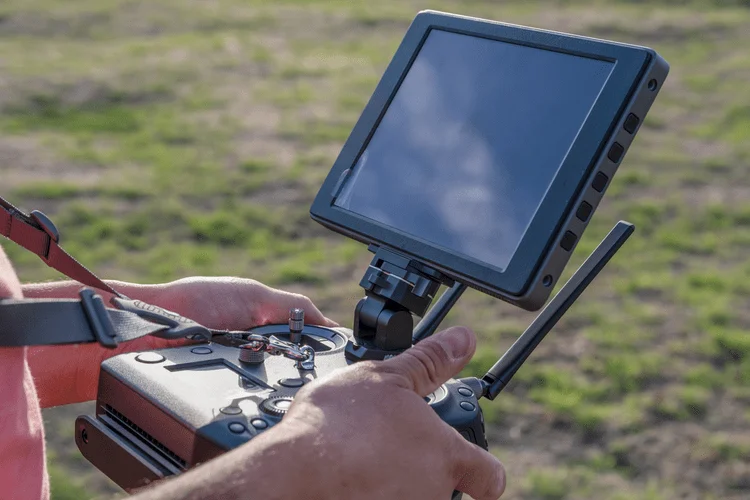Everyone was respectful, nearly too well mannered, sizing each other up, attempting to understand their place inside the staff. There was an air of pleasure, but additionally uncertainty, as they have been primarily strangers about to embark on an incredible journey. Concurrently, the demands of ‘the work ahead’ are beginning to become more urgent – however not sufficient has been learned to settle disputes by way of experience or knowledge. You’ll recognise this part from any team-based game show, when voices are raised as competing approaches are debated while the clock slowly clicks down!
Some folks naturally take charge, whereas others excel in technique or project administration. If certain group members are less engaged, prompt them for enter to encourage participation. Assigning roles thoughtfully is a key step in the five-stage mannequin of group growth.
The aim is to make sure that everyone feels a way of closure and is aware of what’s next for them. After all, it’s not like the https://www.globalcloudteam.com/ group reveals as much as the workplace in the future and decides unanimously to peacefully progress to the norming stage. And typically the storming stage appears to last for much longer than is critical. Hold to the project’s timeline and maintain referring to the organizational instruments you’ve developed. During this stage, conflicts start to resolve, staff members appreciate each other’s strengths, and respect for authority grows.
Brainstorming Strategies: Efficient Methods To Spark Creativity
If all members of the group are conscious that the group will quickly disband, productiveness often decreases. At this time, the group will typically try to complete any remaining work and to judge their work collectively to identify the challenges they overcame and the teachings they realized to apply to future group work. In the first three phases of Tuckman’s 5 levels of group development model, the roles you employ from Belbin’s Staff Role Stock could make a large difference to that teams success and effectiveness. At the performing stage, relationships are fashioned and there’s a clear and stable structure. Issues and conflict, after all, do nonetheless arise, however they’re handled effectively. The prime focus of the staff is on problem fixing and assembly objectives; effectiveness is at its peak.
That’s as a result of this stage depends on their familiarity with one another’s work kinds, their experience with prior groups and clarity of assigned duties. In this earlier stage, take time to ascertain or re-establish ground rules and roles in the staff. Realign on the group’s purpose to so everyone knows how to maximize their strengths and trust in other’s strengths in instances the place they need help.
The Adjourning stage is the ultimate phase of Bruce Tuckman’s model of group development. This stage, also referred to as the mourning or deforming stage, involves the disbanding of the team after the profitable completion of the project or when the team’s goals have been achieved. Nevertheless, after numerous empirical research recognized a fifth stage of termination, Tuckman added this last stage to his theoretical mannequin iot cybersecurity of the life cycle of teams (Tuckman & Jensen, 1977).
- Understanding these stages helps leaders and group members navigate the complexities of teamwork and enhances their capacity to work together effectively.
- Individuals within the group might feel a way of accomplishment if the project was completed efficiently, whereas simultaneously feeling sad or concerned that their time together has come to an finish and unsure concerning the future.
- Leaders and team members must recognize their present stage and apply methods to navigate challenges successfully.
- One of the commonest misconceptions about Tuckman’s mannequin is that teams will at all times transfer linearly from one stage to the subsequent, like stepping stones throughout a river.
How Much Does Search Engine Optimization Price: Complete Search Engine Optimization Pricing Guide 2025
With Out sturdy management, teams may battle reaching the performing stage. By developing your personal leadership abilities, you presumably can model collaboration best practices and help your group attain their fullest potential. In the sooner stages of group dynamics, set up a clear communication plan.
McGrath contended that for every identified perform, teams can follow a selection of alternative “time-activity paths” so as to transfer from the initiation to the completion of a given function. Fisher outlines four phases via which task teams are most likely to proceed when engaged in choice making. By observingthe distribution of act-response pairs (a.k.a. “interacts”) throughout completely different moments of the group process, Fisher noted how the interaction modified as the group determination was formulated and solidified. His methodology pays special consideration to the “content” dimension of interactions by classifying statements by way of how they reply to a decision proposal (e.g. agreement, disagreement, and so on.). Throughout the Ending Stage, some team members might become much less focused on the group’s tasks and their productivity could drop. Alternatively, some team members could discover focusing on the task at hand is an efficient response to their unhappiness or sense of loss.
It’s additionally a time for conducting a thorough retrospective to know the teachings learned, which could be invaluable for private and professional growth. The Adjourning stage is essential for agile groups as properly, as it permits them to replicate on their achievements, learnings, and areas for enchancment earlier than shifting on to new challenges. During the Performing stage, the team’s collective competence and collaboration are at their peak. This is the point the place the staff, having successfully navigated the trials and tribulations of forming, storming, and norming, reaches a state of harmony and high productivity. It’s the section where the team’s exhausting work pays off, and so they can operate with a sense of ease and delight, usually exceeding their set objectives. Staff Tasks through the Storming stage of growth name for the team to refocus on its objectives, maybe breaking bigger objectives down into smaller, achievable steps.

Modifications, similar to members coming or going or large-scale adjustments within the external environment, can lead a team to cycle back to an earlier stage. If these adjustments – and their resulting behaviors – are recognized and addressed instantly, groups might successfully stay within the Performing stage indefinitely. At the performing stage, the synergy inside the staff reaches its zenith, enabling a seamless workflow and the achievement of objectives with efficiency and creativity. Staff members exhibit a deep mutual respect and an understanding of each other’s strengths, facilitating an setting the place tasks are accomplished with a high diploma of collaboration and minimal friction.
Every stage of team growth has its own recognizable emotions and behaviors; understanding why issues are taking place in sure methods on your team can be an essential a part of the self-evaluation course of. In this local weather of high performance, the group’s productiveness soars, marked by the delivery of remarkable results that always exceed expectations. It Is a period characterised by a powerful sense of accomplishment and satisfaction in the work being carried out, as each member performs a pivotal position in driving the team ahead. This stage is not only about reaching targets but additionally about personal and skilled improvement, as the challenges encountered and overcome result in skill enhancement and higher confidence. Management roles during the norming stage often become extra distributed, with staff members taking initiative and exhibiting increased accountability for the group’s objectives.

For instance, Poole (see below) found in his empirical analysis that seemingly complex patterns of behavior in group decision-making result from the interaction of life-cycle and teleological motors. Of course, they can additionally be smaller assemblages of employees—committees, workgroups or just project teams. You recognize this is not anyone team member’s fault, however you wish to make it proper. The last thing you need to experience is group members who de-value one another or collectively fall behind. Drive clarity and impact at scale by connecting work and workflows to company-wide targets. Uncover confirmed strategies to spice up loyalty, scale back churn, and develop your small business sustainably.
This shift additional solidifies the team’s cohesion, as leadership is seen as a shared responsibility quite than resting on the shoulders of a single particular person stages of team development. Understanding these stages helps leaders handle groups successfully, anticipate challenges, and foster collaboration. By understanding these phases, organizations can improve teamwork, resolve conflicts successfully, and increase overall performance.
Think again to your highschool days if you have been assigned a group project in certainly one of your courses. You were given a task to complete after which challenged to complete that task with different people (one of whom was undoubtedly going to slack off and let the relaxation of the group handle the complete project). So many issues arose when the staff began working together, and it appeared more trouble to function as a unit than as an individual. Study methods to spice up customer satisfaction, reduce churn, and drive enterprise development.
In this text we discover the most effective 10 and most popular character checks and tools for groups that need to be simpler and happier. They’re Going To look to you for steering and assist, and if you set up a trusting two-way dialog, you’ll pave the way in the direction of their professional progress. You e-book 1-on-1 meetings with team members to study each of their experiences. As you do that, you recognize clear and constant points with every group member and the benefits of hosting a team retrospective. You approach your group to study their bottlenecks, roadblocks and considerations. You come to understand that, by involving yourself, they’re burdened by an apprehension to talk up and would rather spend time rectifying the scenario.